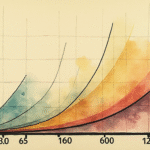Background on Donald Trump and His Relevance
Donald Trump, the 45th President of the United States (2017-2021), played a significant role in negotiating the United States-Mexico-Canada Agreement (USMCA), also known as the T-MEC. His administration aimed to strengthen the automotive industry’s rules of origin, ensuring more regional content in North American vehicles to protect U.S. jobs and national security.
Understanding the T-MEC and its Automotive Rules
The T-MEC replaced the North American Free Trade Agreement (NAFTA) in 2020, with one of its key objectives being to increase regional content in automotive production. The agreement raised the Regional Value Content (RVC) from 62.5% to 75%, compelling automakers to incorporate more North American parts in vehicles sold within the region to avoid tariffs.
Trump’s Unilateral Action
Despite the ongoing trilateral review of T-MEC, scheduled to begin in the second half of 2025 and conclude with a decision in July 2026, Trump issued an executive order unilaterally setting the regional content rate at 85% for complete tariff exemptions on automotive parts within a year. Currently, all T-MEC compliant parts are tariff-free.
Impact of Trump’s Executive Order
Trump’s executive order introduces a formula that partially reduces tariffs on U.S. imported automotive parts if they originate from T-MEC countries.
- Example 1: If a U.S.-based manufacturer builds a car with 85% American or T-MEC content, no tariffs will be paid for that vehicle’s production during the first year.
- Example 2: If a manufacturer produces a car in the U.S. with 50% American or T-MEC content and 50% imported parts, the tariffs will only apply to 35% of the imported components during the first year.
The order imposes strict penalties on importers seeking tariff reductions exceeding approved limits.
Trump’s Rationale and Goals
At a rally in Michigan marking his first 100 days of the second presidential term, Trump claimed that Mexico and Canada have taken a significant portion of U.S. automotive production in North America.
- Claim: Mexico has taken 32% of U.S. automotive production, while Canada accounts for 10-12%.
- Goal: The new executive order aims to protect national security by incentivizing domestic car production and reducing U.S. dependence on foreign car imports and parts.
The modified action encourages vehicle assembly in the U.S., offering tariff compensation for automotive components used in U.S.-assembled vehicles:
- 3.75% of the manufacturer’s suggested retail price (MSRP) for U.S.-produced vehicles from April 3, 2025, to April 30, 2026
- 2.5% of the MSRP for U.S.-produced vehicles from May 1, 2026, to April 30, 2027
These percentages correspond to tariffs of 25% and 15% on the first year’s vehicle value and 10% on the second year’s vehicle value, should such tariffs be applied.
All other car imports remain subject to the 25% tariff.
Key Questions and Answers
- Q: What is the T-MEC? A: The United States-Mexico-Canada Agreement, replacing NAFTA in 2020, aims to increase regional content in automotive production and protect North American jobs.
- Q: What did Donald Trump’s executive order change? A: The order unilaterally set the regional content rate at 85% for complete tariff exemptions on automotive parts within a year.
- Q: How does the new order impact tariffs on automotive parts? A: The order introduces a formula that partially reduces tariffs on U.S. imported automotive parts originating from T-MEC countries.
- Q: What are the goals of Trump’s executive order? A: The order aims to protect national security by incentivizing domestic car production and reducing U.S. dependence on foreign car imports and parts.






